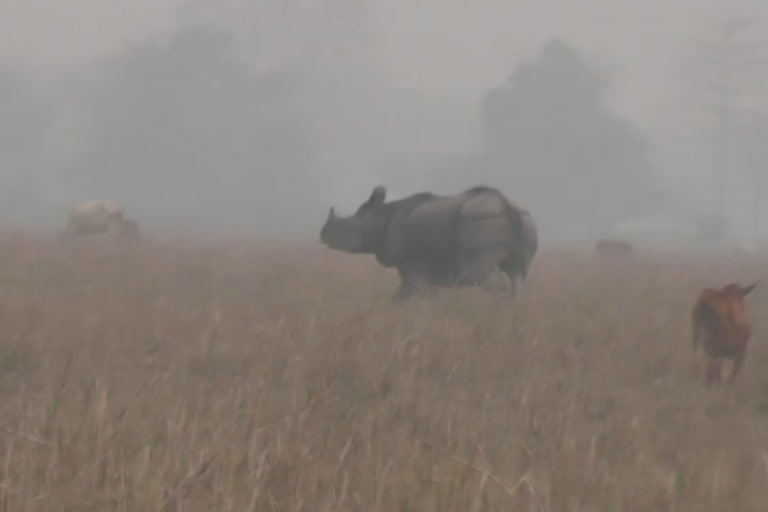Guwahati (Assam): Apart from Kaziranga and Manas national parks, the one-horned rhinoceros will soon be seen at the Laokhowa and Burhachapori wildlife sanctuaries in Assam.
The Assam government had received the green signal for translocating at least 10 one-horned rhinos to the wildlife sanctuaries located in Central Assam. The rhino translocation project was undertaken as part of the India Rhino Vision (IRV) 2020 project, which sought to increase the one-horned rhino population to 3,000 in Assam by 2020. Several rhinos had successfully been translocated from Kaziranga national park and Pabitora Wildlife sanctuary to Manas national park.
"We have got the permission for translocating ten rhinos to the Laokhowa and Burhachapori wildlife sanctuaries. The work is on in this regard. We are trying to complete the translocation this year itself or by early next year," said P Shiv Kumar, Director of the Kaziranga national park.
Although the Laokhowa and Burhachapori wildlife sanctuaries had also been identified as suitable rhino habitat, the translocation to these two wildlife sanctuaries got stalled after the two translocated rhinos including a mother and a calf died.
"This is an ongoing project. We had already translocated two rhinos to Laokhowa and Burhachapori, which died due to some problem in the past. There were some problems during the selection of the rhino. We selected an old one, which died there," Kumar said.
Read: Rhino carcass riddled with bullets, dehorned in Kaziranga
Pertinently, the Laokhowa Burhachapori wildlife sanctuary had a rhino population in the past. According to official records, the wildlife sanctuary had over 100 one-horned rhinos before 1983. The rhino population, however, got wiped out due to poaching.
"Now the work for the new bridge on Bhomoraguri is on. Once the bridge gets completed, there will free movement of rhinos from Kaziranga national park to Laokhowa Burhachapor wildlife sanctuaries. The Kaziranga national park will have a contiguous landscape with the Laokhowa and Burhachapori wildlife sanctuaries after the bridge is completed," Kumar said.
Earlier in February 2018, one adult rhino entered Laokhowa and Burhachapori wildlife sanctuary from the Orang national park. The rhino was, however, killed by a poacher.
The Laokhowa wildlife sanctuary (70.1 square km) and Burhachapori wildlife sanctuary (44.6 square km) are known to be suitable rhino habitats. The proposed translocation of one-horned rhinos is also expected to increase the genetic health of a population and prevent inbreeding.



